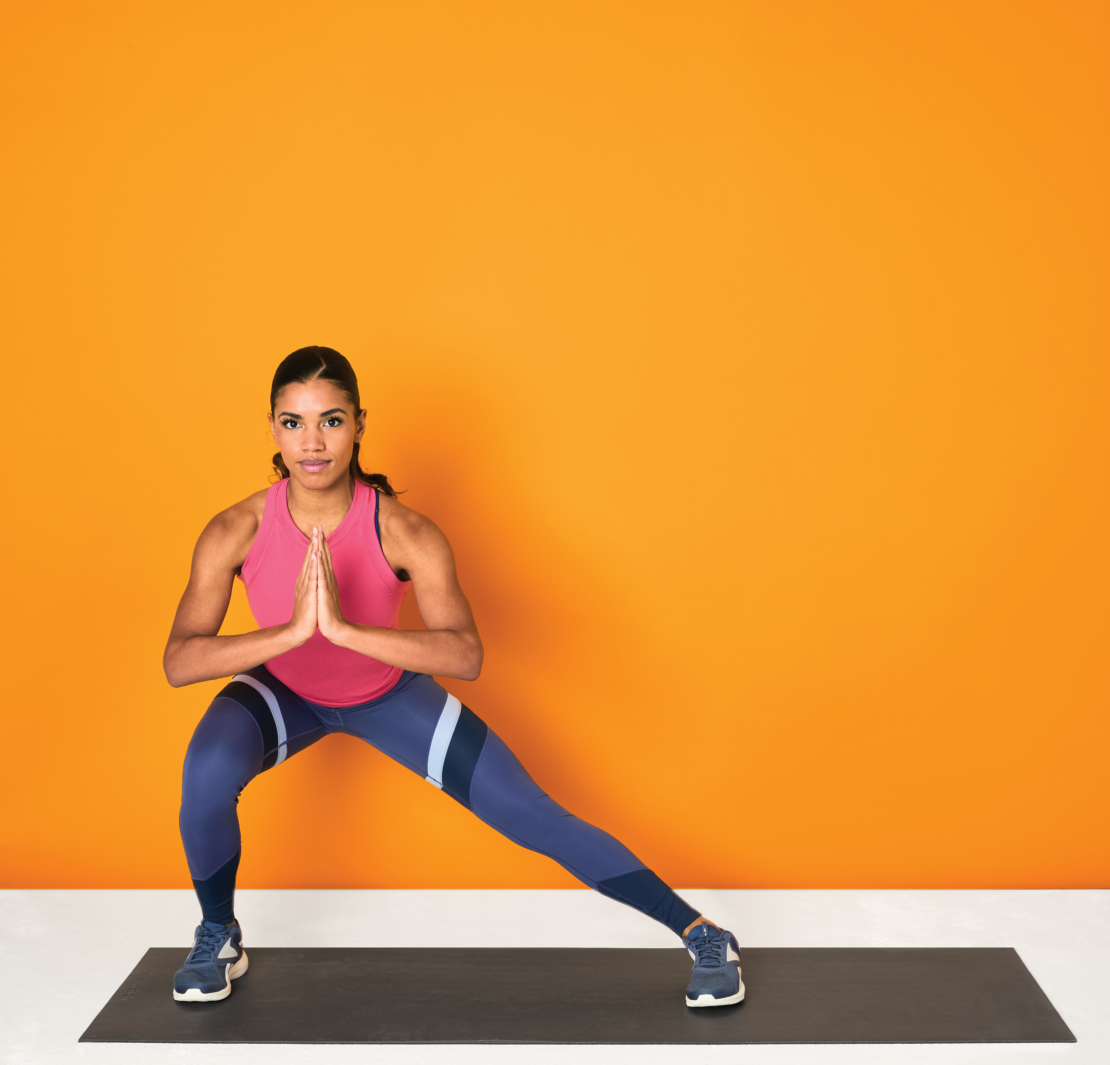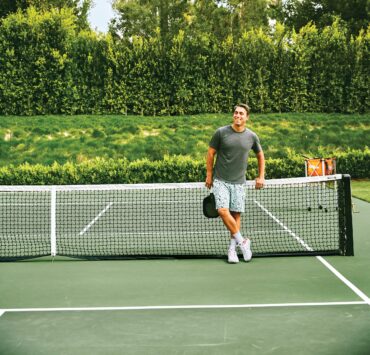The ability to move quickly in all directions on the court stems from strong legs, says Stephanie Mansour, a certified trainer, fitness contributor to the Today show, and host of Step It Up with Steph, an online fitness platform, app, and TV show on PBS. “Strengthening the quads, glutes, hips, hamstrings, and calves is important for propelling you forward and backward as you play,” she explains. “And stretching the inner-thigh muscles helps improve your ability to step side to side and lunge and reach for the ball.”
These moves from Mansour target all the key lower-body muscles. “They help your body work in tandem just as it needs to do on the court,” she says. Perform them as a circuit and repeat it once or twice. (Just be sure not to do the exercises more frequently than every other day.)
1. SIDE LUNGE
A. Stand with your feet hip-width apart.
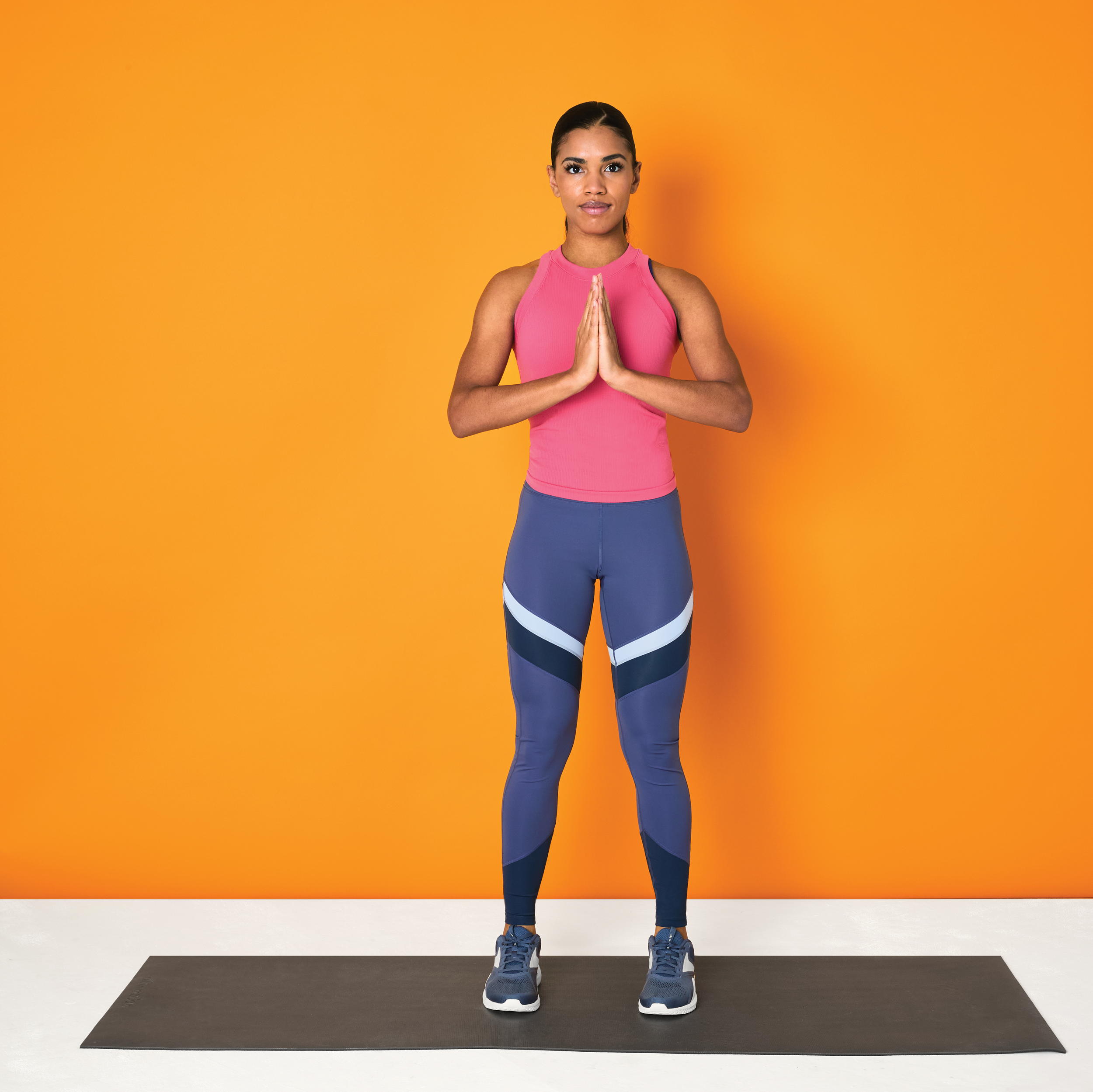
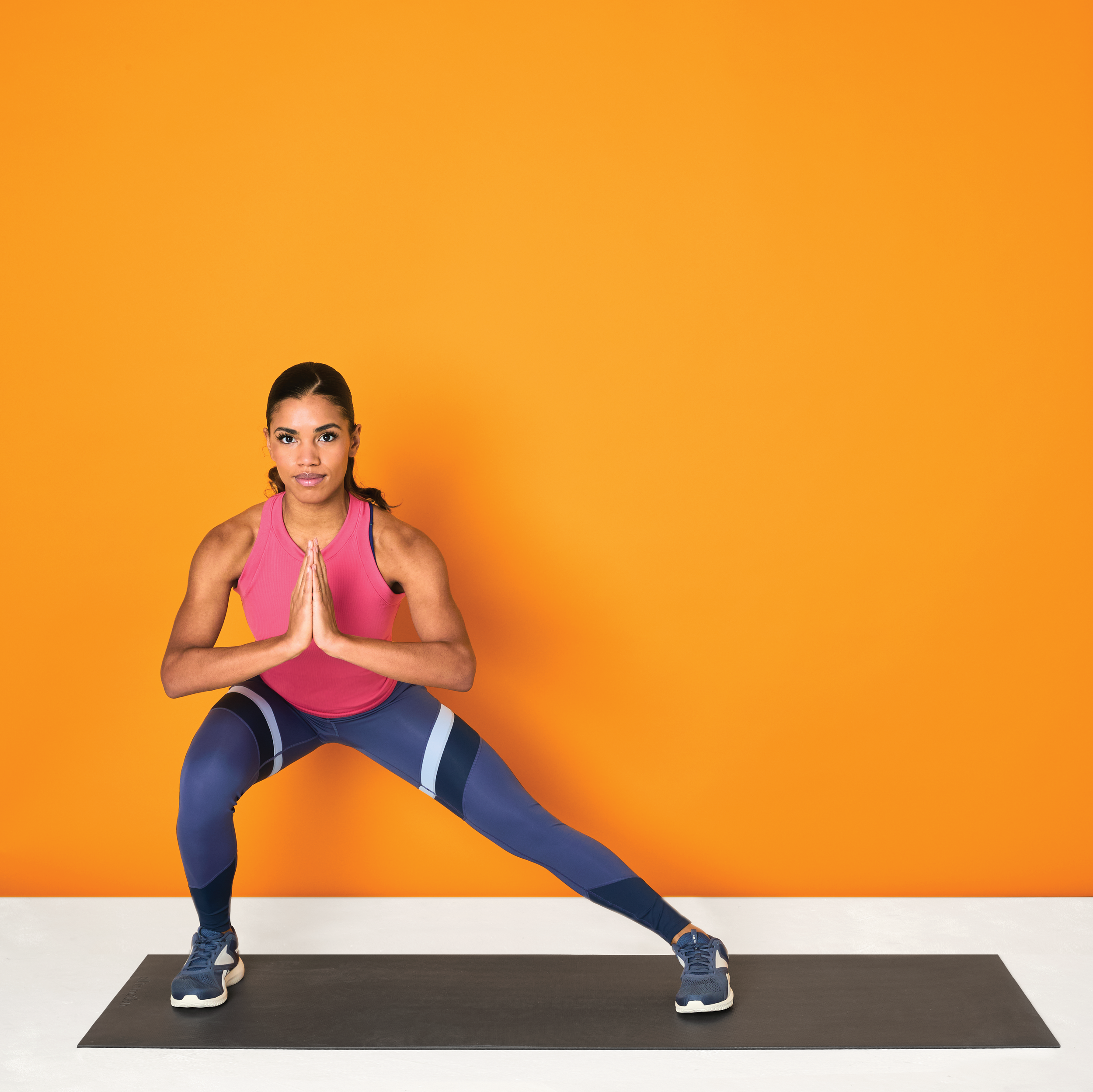
B. Step your right foot out to the right. Keep your left leg straight as your right knee bends over your right ankle. Reach your right glute back as if you’re trying to sit in a chair. Pull your navel in, then press down through your right heel to return to starting position. Do 10 times, then switch sides and repeat 10 times.
B. Step your right foot out to the right. Keep your left leg straight as your right knee bends over your right ankle. Reach your right glute back as if you’re trying to sit in a chair. Pull your navel in, then press down through your right heel to return to starting position. Do 10 times, then switch sides and repeat 10 times.
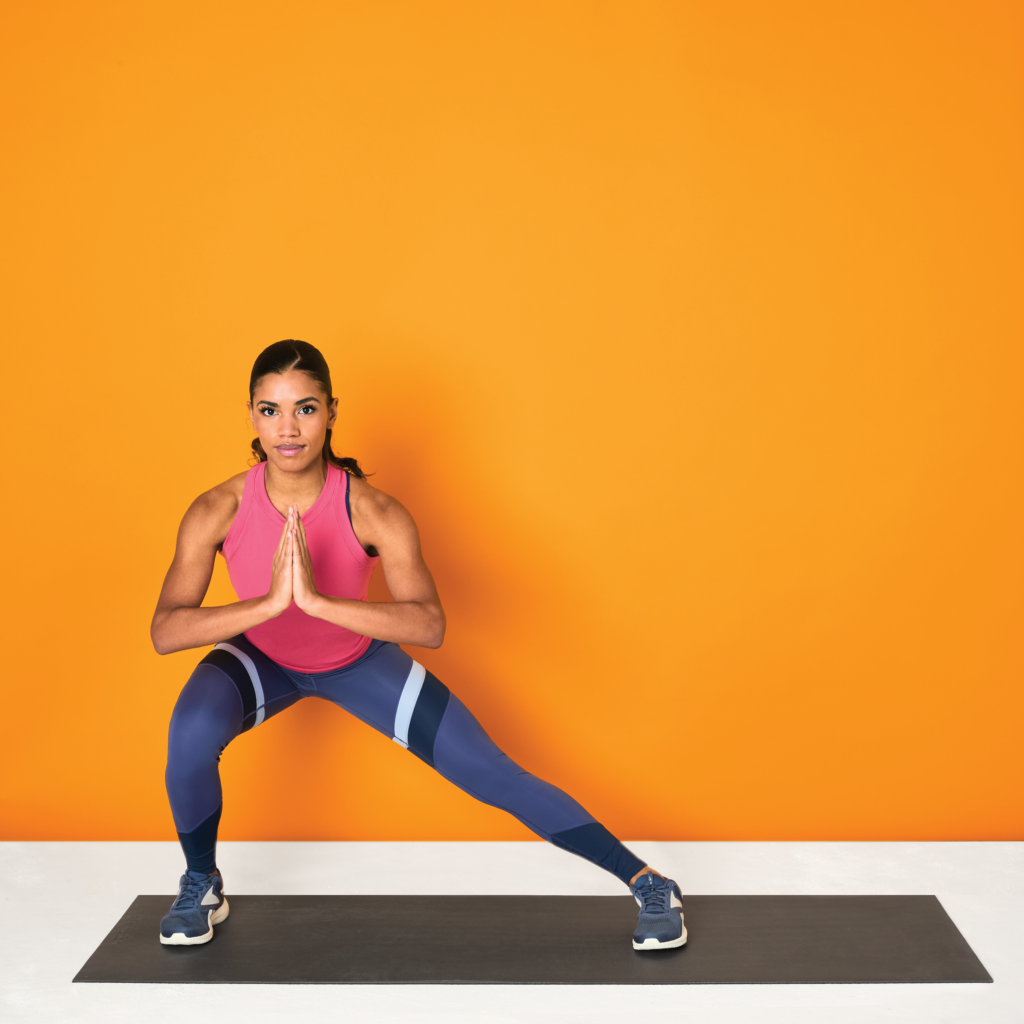

2. REVERSE LUNGE
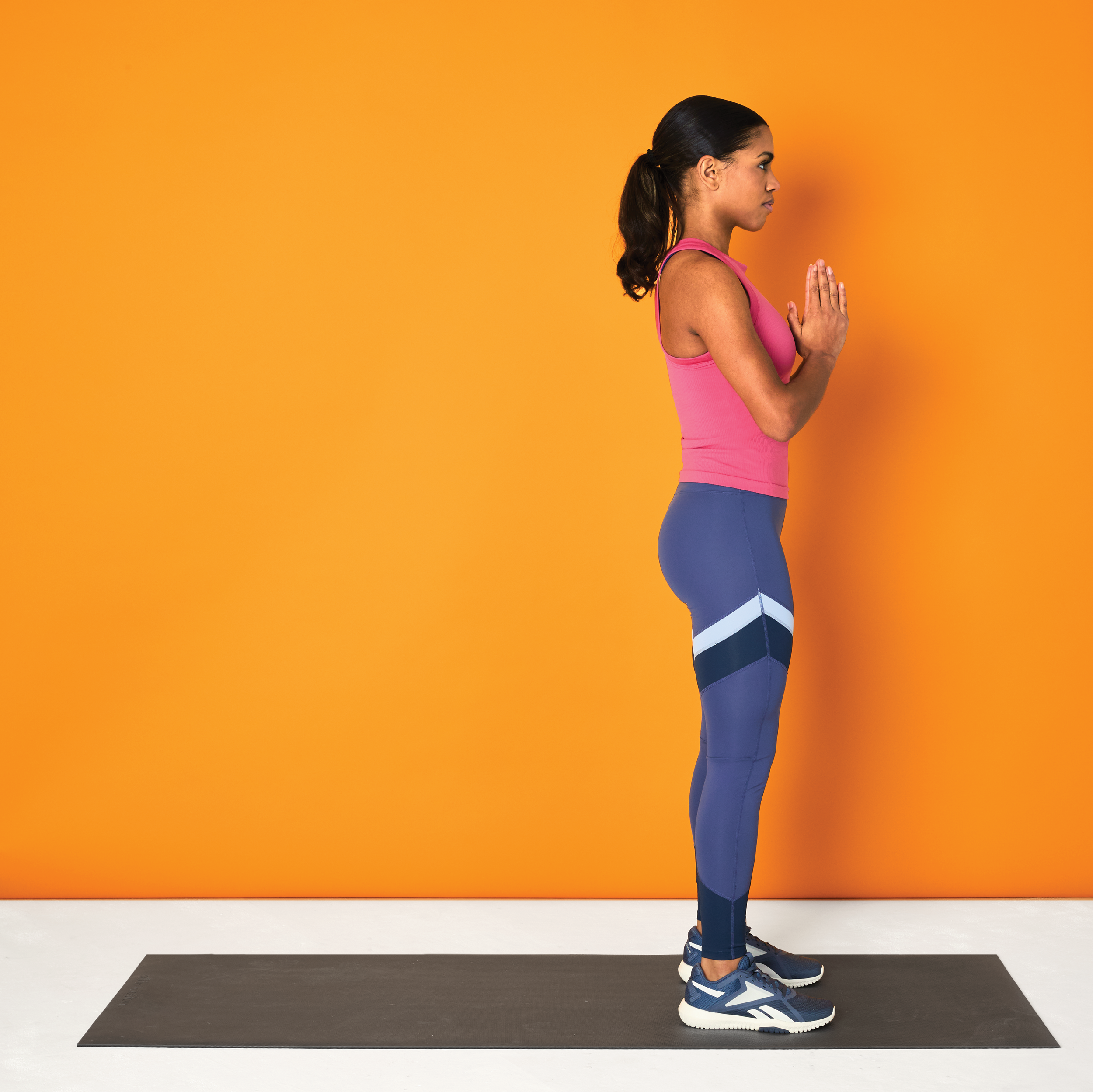
A. Start with your feet hip-width apart.
A. Start with your feet hip-width apart.
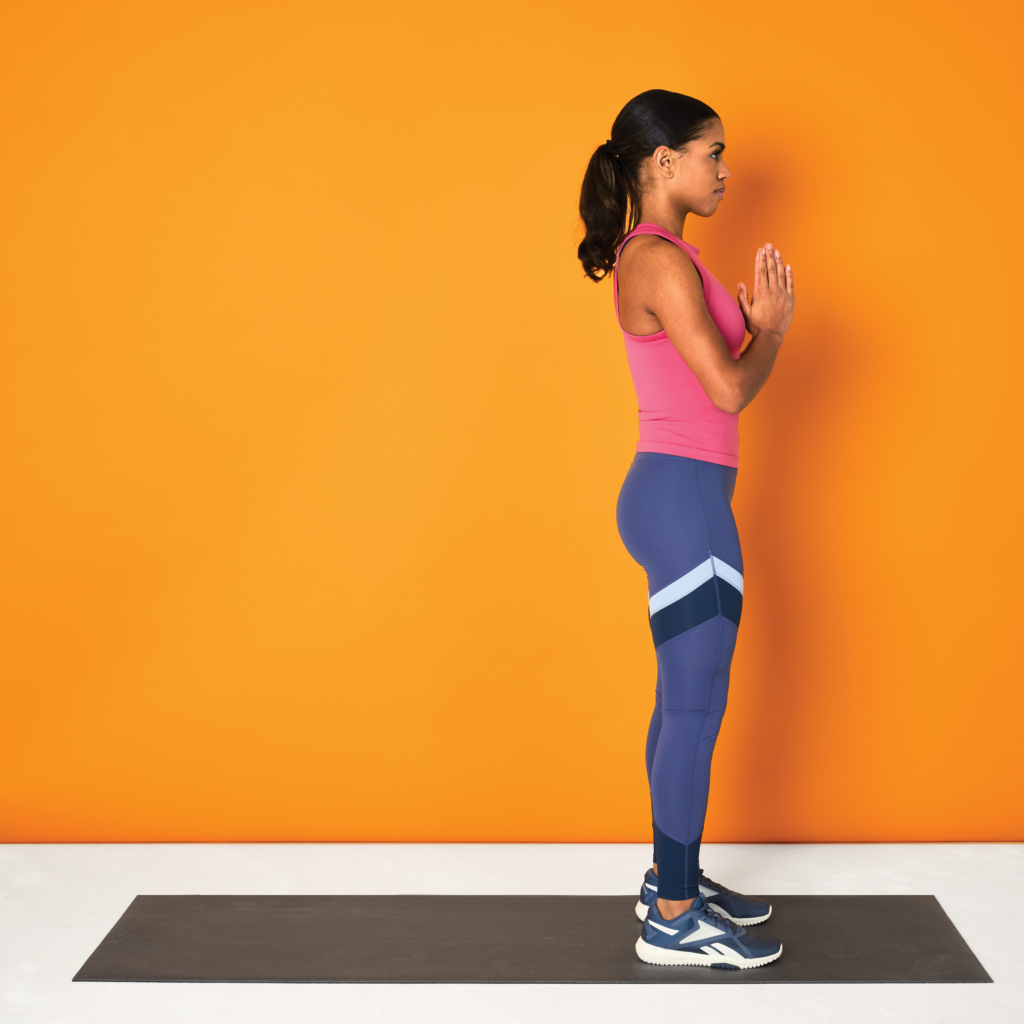
B. Step your right foot back. Lower your right knee down toward the floor and bend your left knee, making sure it’s over your ankle. Press down through your left heel and bring your right leg back to starting position. Do 10 times, then switch sides and repeat 10 times.
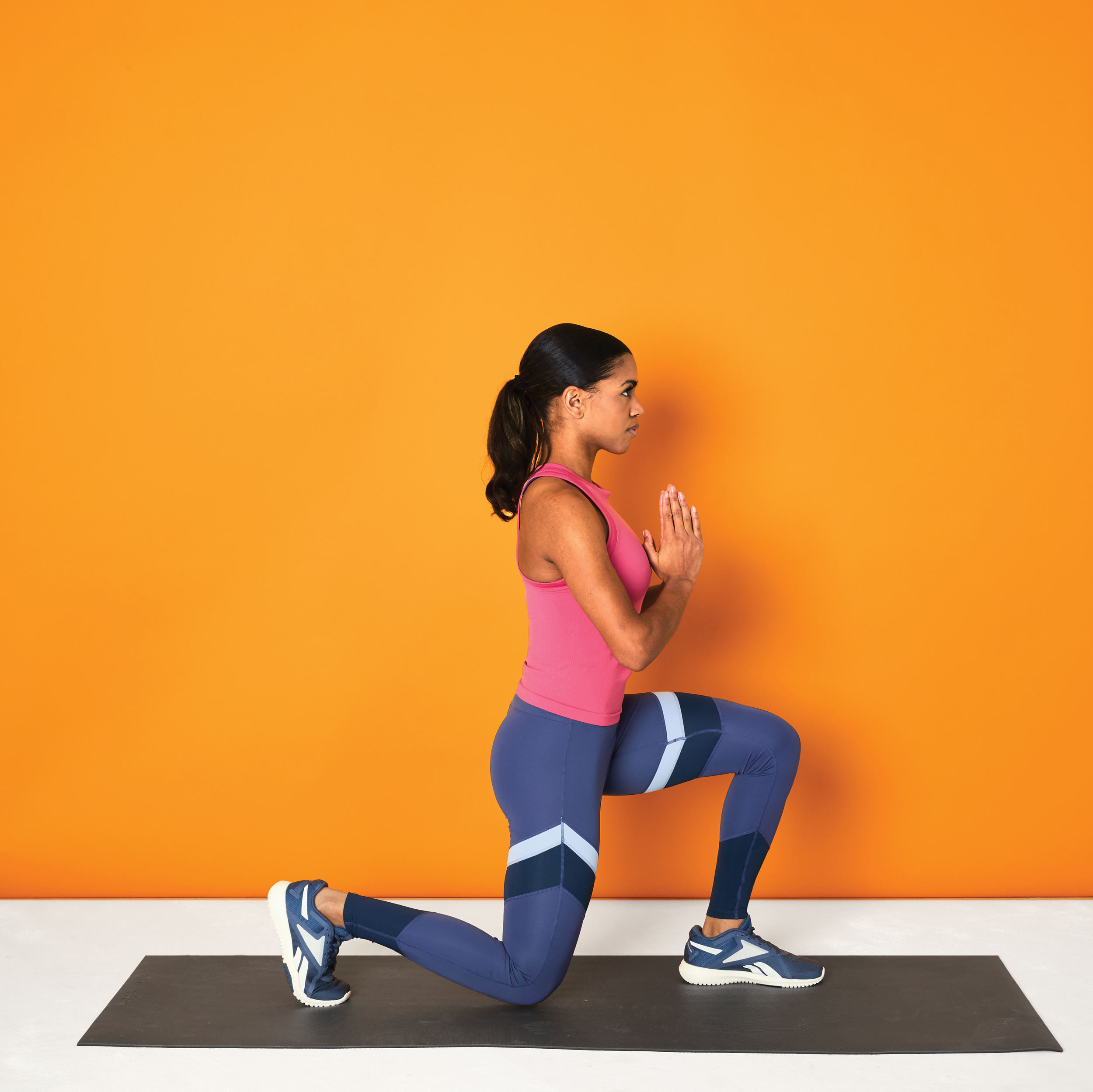
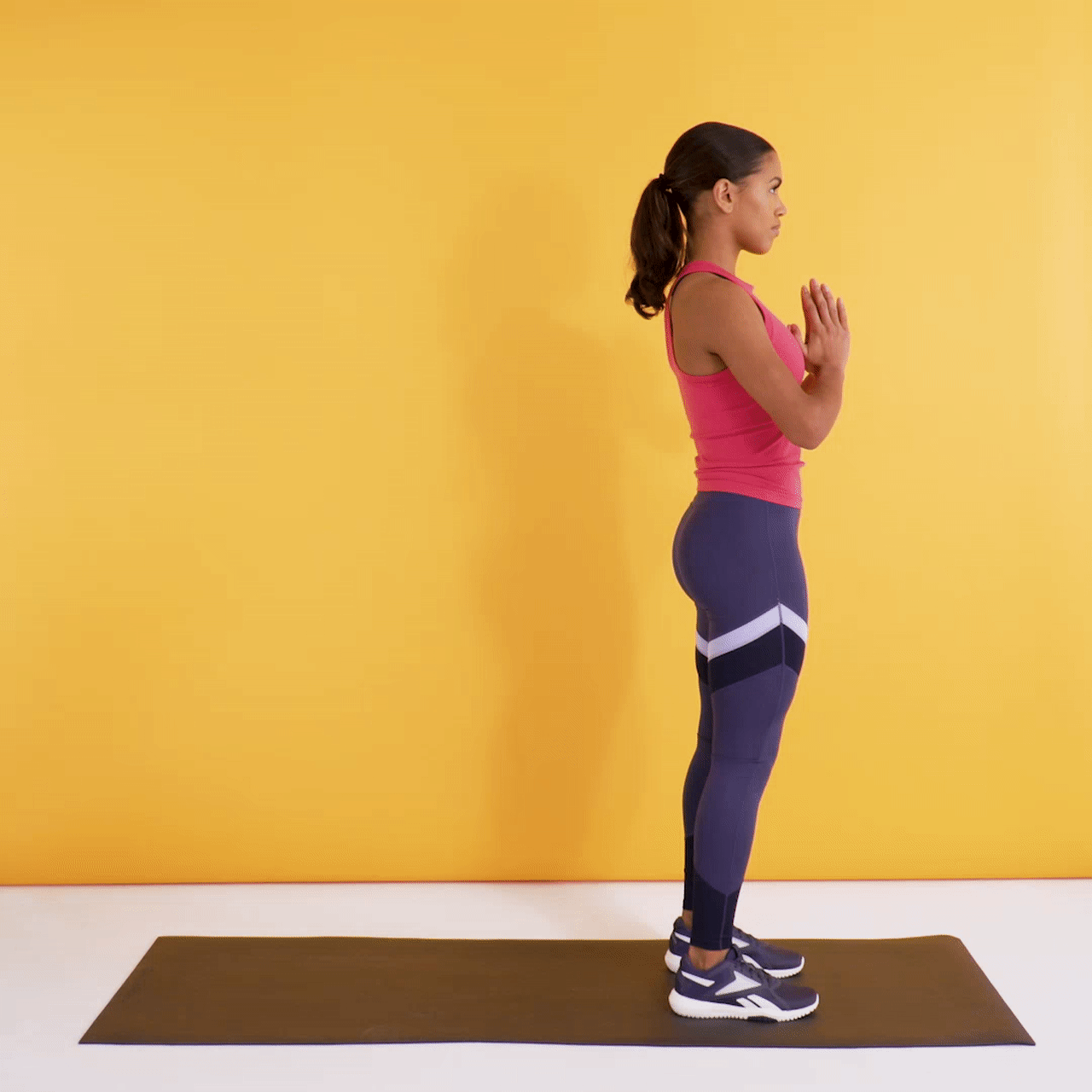
3. WIDE-LEG OPEN-TOE SQUAT
A. Stand with your feet wider than shoulder-width apart and your toes turned out.

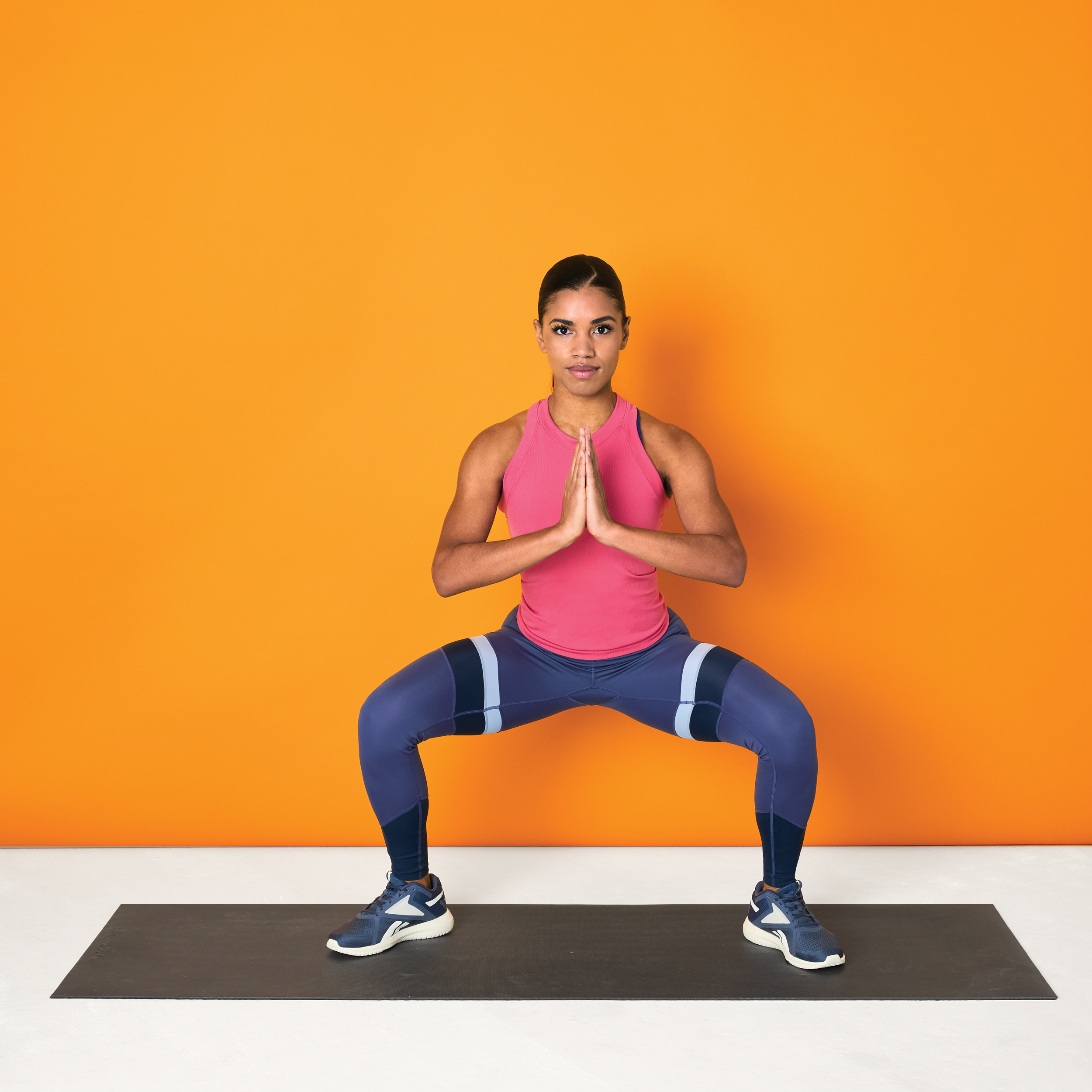
B. Bend your knees out to the sides and lower into a squat, keeping your back straight and reaching your glutes down. Press through your heels and come back to a standing position. Do 10 times.
B. Bend your knees out to the sides and lower into a squat, keeping your back straight and reaching your glutes down. Press through your heels and come back to a standing position. Do 10 times.
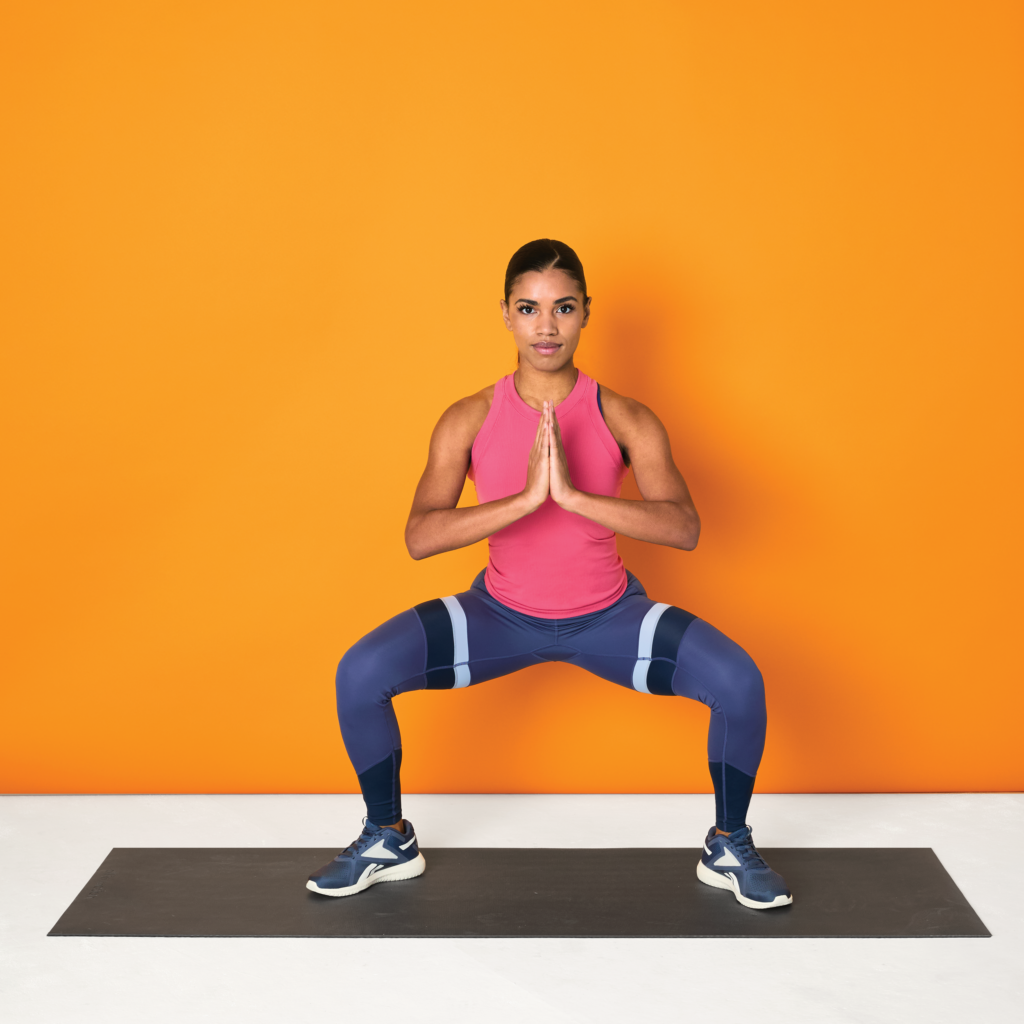
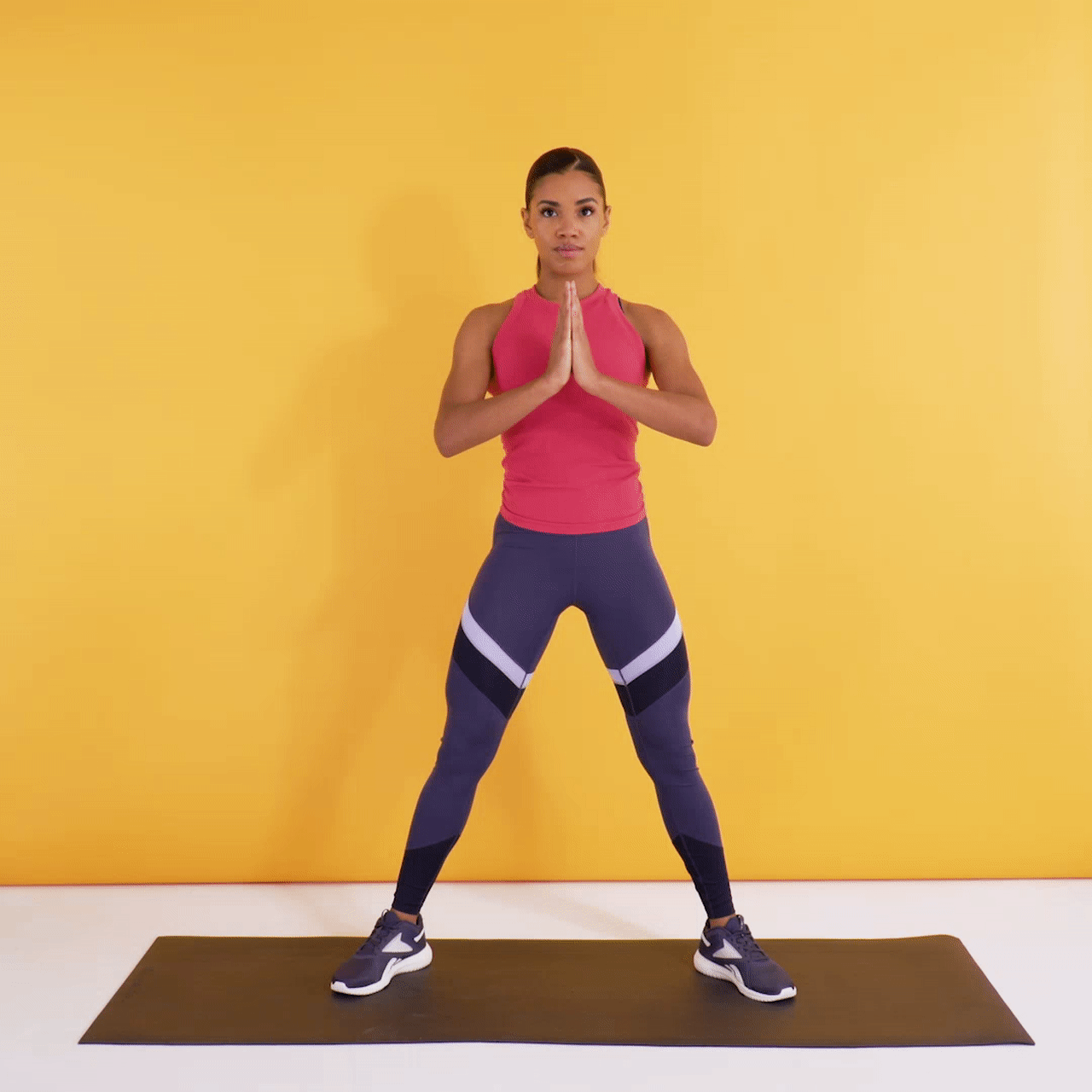
MODEL: BRITTANY WATTS FOR WILHELMINA. ATHLETA TANK, ASICS LEGGINGS, REEBOK SNEAKERS

GARY A. PATTEE, M.D. is a Diplomate of the American Board of Orthopaedic Surgery, a Fellow of the American Academy of Orthopaedic Surgeons, and a motorcycle-racing enthusiast.
DOC TALK : LEG STRENGTH
Orthopedic surgeon Gary A. Pattee, M.D., explains why leg strength is so important to your game.
Having a strong core and upper body is essential for competing in pickleball, but your legs are what give you the mobility to reach the ball. Exercises that focus on balanced lower-body strength help improve your ability to return more shots and reduce the risk of serious injuries.
Several muscle groups work together to propel the body and make the rapid side-to-side movements needed to lunge and reach for the ball. The gluteals (gluteus maximus, medius, and minimus) are large muscles that, along with the hamstring muscles (biceps femoris, semitendinosus, and semimembranosus), help stabilize the pelvis and contribute to forward acceleration. Because these muscles are dense and powerful, they exert a large amount of force over a short period of time, resulting in “explosive” movements. Besides enhancing athletic performance, strong glutes and hamstrings can improve posture and help relieve or avoid lower-back pain. The quadriceps and calf muscles work in conjunction with the glutes and hamstrings to provide the power to push off with the foot and quickly change direction.
Exercises to strengthen these muscle groups can be incorporated into a regular fitness routine. In addition, because mobility of the hips, knees, and ankles is also important, doing some careful stretching exercises will help improve joint and muscle flexibility.

